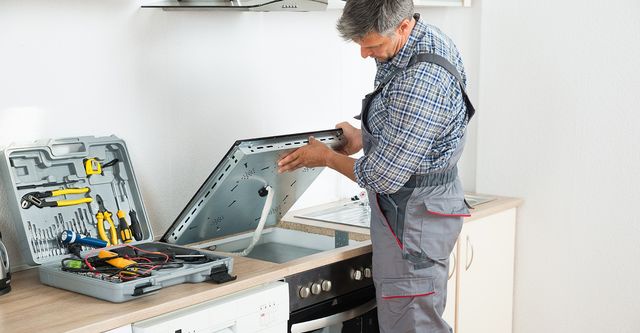An electric stove repair is an essential appliance in modern kitchens, making cooking convenient and efficient. However, like any other appliance, electric stoves can experience issues over time. From malfunctioning burners to temperature inconsistencies, electric stove repairs may become necessary to keep your kitchen running smoothly. In this comprehensive guide, we will delve into common electric stove problems and provide expert tips for troubleshooting and repair.
1. Understanding Electric Stove Components: Before delving into repairs, it's important to understand the key components of an electric stove. These include the burners, control knobs, heating elements, thermostat, and wiring. Familiarizing yourself with these components will help you identify the source of the problem more accurately.
2. Common Electric Stove Issues: Electric stoves can encounter a range of issues that may require repair. Some common problems include:
a. Burner Malfunction: One of the most frequent issues is a malfunctioning burner. If a burner fails to heat up or heats unevenly, it could be due to a faulty heating element or wiring. Replacing a faulty heating element is often a straightforward fix.
b. Temperature Inconsistencies: If you notice that your electric stove is not maintaining a consistent temperature, it could be a sign of a malfunctioning thermostat. Calibrating or replacing the thermostat might be necessary to ensure accurate cooking temperatures.
c. Ignition Problems: For stoves with electronic ignition, a faulty ignition switch can prevent burners from lighting up. Cleaning the ignition components or replacing the switch may be required.
d. Control Knob Issues: Knobs that are hard to turn or no longer respond can hinder your cooking experience. Lubricating or replacing the knobs can often resolve this problem.
e. Burner Indicator Lights: Malfunctioning indicator lights can make it difficult to determine whether a burner is on or off. Checking the indicator bulbs and wiring can help resolve this issue.
3. Troubleshooting Electric Stove Problems: When faced with an electric stove issue, it's important to approach troubleshooting systematically. Here's a step-by-step guide:
a. Safety First: Before attempting any repairs, ensure the stove is disconnected from the power source to prevent electric shocks. Safety should always be a priority.
b. Identify the Problem: Determine the specific issue you're facing. Is it a single burner problem or a more widespread issue? This will help narrow down potential causes.
c. Check Power Supply: Ensure the stove is properly plugged in and that the circuit breaker hasn't tripped. Sometimes, the issue may be as simple as a power disruption.
d. Examine Burners and Heating Elements: Inspect the burners and heating elements for visible damage or loose connections. Replace any faulty components as needed.
e. Test the Thermostat: Use an oven thermometer to test the accuracy of the thermostat. If there's a significant variance, recalibration or replacement may be necessary.
f. Clean and Maintain: Regularly clean burners, heating elements, and control knobs to prevent buildup that can lead to malfunctions.
4. DIY Electric Stove Repairs: While some repairs may require professional assistance, there are several DIY fixes you can try:
a. Heating Element Replacement: Replacing a faulty heating element is often a straightforward process. Turn off power, remove the old element, and install the new one according to the manufacturer's instructions.
b. Knob Lubrication: If control knobs are difficult to turn, try lubricating the shafts with a silicone-based lubricant. Be careful not to use too much lubricant, as it can attract dirt.
c. Burner Cleaning: Clogged burner ports can lead to uneven heating. Clean burners with a brush or compressed air to ensure proper functioning.
5. When to Seek Professional Help: While some repairs can be done independently, certain issues are best left to professionals. These include complex wiring problems, ignition system repairs, and thermostat replacements. If you're unsure about tackling a repair, it's safer to consult a qualified technician.
6. Preventive Maintenance: To prolong the lifespan of your electric stove and minimize the need for repairs, follow these preventive maintenance tips:
a. Regular Cleaning: Wipe down the stove after each use and clean burner components to prevent buildup that can affect performance.
b. Avoid Spillovers: Clean up spills promptly to prevent them from seeping into the electrical components and causing damage.
c. Professional Inspections: Schedule regular professional inspections to catch potential issues before they escalate.
d. Proper Usage: Avoid overloading the stove with heavy pots and pans, as this can strain the heating elements.
Conclusion: An electric stove is a valuable asset in any kitchen, but it's important to be prepared for potential repairs. By understanding common issues, troubleshooting effectively, and performing basic maintenance, you can keep your electric stove running smoothly for years to come. Remember, safety should always be a top priority, and if you're uncertain about a repair, don't hesitate to seek professional assistance.


No comments yet